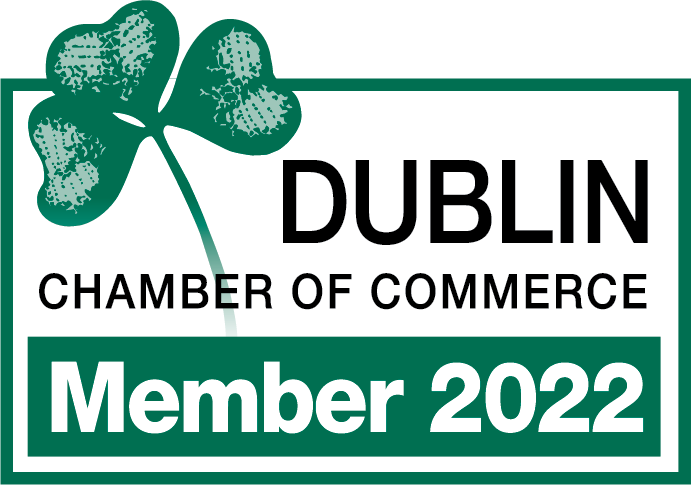Turning a great idea into a physical reality... sometimes it seems like it'll be quick and painless, other times it feels like the finish line is too far to even fathom.
But with any great product, you need to come up with a working prototype before you can start producing it properly.
So, what is that process like?
Join us as we take you through the steps needed for a prototype example of your idea. It's the first phase on the journey to mass production and sales!
Planning for a Working Prototype
Before you start building a prototype, it's important to identify your project's requirements and goals. Understand what you want to achieve with your product. Determine the main features and functionalities it should have.
Knowing your goals helps you stay focused during the development process. It also ensures that your prototype meets the needs of your target audience.
Research is a critical step in planning. Look into market needs and analyze your competitors. Understanding what your potential customers want will guide your design decisions.
Competitor analysis helps you see what similar products offer and where they fall short. This knowledge lets you create a product that stands out and meets specific needs.
Specifications and Features for the Prototype
Once you understand market needs and goals, define the specifications and features of your prototype. Outline the essential elements your prototype must include.
Decide on the materials, dimensions, and functionalities. This step provides a blueprint for your development process, ensuring you have a clear direction.
Creating a Detailed Project Plan
A detailed project plan is the final step in the planning phase. Break down the development process into manageable tasks. Set realistic timelines and milestones for each task.
This plan keeps your project on track and helps you monitor progress. It also allows you to allocate resources effectively and address potential challenges promptly.
Designing the Prototype
Designing a prototype starts with brainstorming and sketching ideas. Gather your team and discuss different concepts. Encourage everyone to share their thoughts and visions.
Sketching helps visualize these ideas and brings them to life. These early designs don't need to be perfect. They're just the starting point for developing a more detailed plan.
Selecting Materials and Tools
After brainstorming, decide on the materials and tools you'll need for your prototype. The choice of materials depends on the product you're developing.
For instance, a prototype of a tech gadget might require electronic components, while a piece of furniture would need wood or metal. Choose materials that are easy to work with and that closely resemble what you'll use in the final product.
Developing a Physical Model
Next, create a physical model of your prototype. Pay close attention to real dimensions and scale to ensure your model is accurate. This step is crucial because it helps you see how the product will look and feel in real life.
It also allows you to test the ergonomics and functionality of the design. Make sure the model is as detailed as possible, so it provides a clear representation of the final product.
Using CAD (Computer-Aided Design) Software for Detailed Design
To refine your design, use CAD software. This technology allows you to create precise, detailed digital models of your prototype. CAD software helps you visualize the product from different angles and make necessary adjustments.
It also provides accurate measurements, ensuring that your prototype meets all specifications. Using CAD software can save time and reduce errors in the design process.
Building the Prototype
Once you have your design ready, it's time to gather the materials and tools you'll need. Make sure you have everything on hand before starting.
This includes the main materials for your prototype and any specific tools required for assembly. Being well-prepared helps avoid delays and ensures a smoother building process.
Start constructing your prototype by following a step-by-step process. Begin with the basic structure, then add detailed features as you go.
It's important to follow the design specifications closely to ensure accuracy. Take your time with each step, double-checking measurements and alignments.
Ensuring Accuracy
While building, pay close attention to the real dimensions of your prototype. Accurate measurements are essential to ensure the final product works as intended.
Use tools like rulers, calipers, and levels to check your work frequently. Maintaining accuracy during construction helps avoid issues later in the process and ensures the prototype functions correctly.
Troubleshooting Common Issues
During construction, you might face challenges or run into common issues. It's important to address these problems promptly to keep the project on track.
If a part doesn't fit or a component isn't working, take a step back and reassess. Sometimes, you might need to adjust the design or replace materials.
Don't get discouraged by setbacks. Instead, use them as learning opportunities to improve your prototype.
Testing and Refining the Prototype
After building your prototype, the next step is testing its functionality and usability. Begin by checking if the prototype works as intended. Test each feature to ensure it performs correctly.
Observe how users interact with the prototype. This helps identify any usability issues that might not be obvious during the design phase. Make sure the prototype is easy to use and meets the needs of its intended users.
Feedback is vital for improving your prototype. Present the prototype to stakeholders and potential users and ask for their input. Encourage them to share their thoughts on its functionality, design, and usability.
Refining the Design and Fixing Issues
Use the feedback you've gathered to make iterative improvements to your prototype. Focus on refining the design and fixing any issues that were identified during testing.
This might involve making adjustments to the dimensions, changing materials, or redesigning certain features. The goal is to improve the prototype step by step, ensuring it becomes more functional and user-friendly with each iteration.
Finalizing the Prototype
Once you've refined your prototype, it's time to prepare it for presentation. Make sure the prototype is clean and polished. Double-check that all features are working as expected.
A well-presented prototype makes a strong impression on stakeholders and potential users. It shows that you've put in the effort to create a high-quality model.
Ensuring the Prototype Closely Resembles the Finished Product
Your prototype should closely resemble the finished product. This includes both its appearance and functionality. Use materials and colors that match the final design.
The goal is to make the prototype look and feel like the real product. This helps stakeholders and users visualize the final version and provides a clear idea of what to expect.
When presenting your prototype, highlight its key features and functionalities. Explain how each feature works and why it's important. Demonstrating the main functions helps others understand the value of your product.
Be clear and concise in your explanations. Show how the prototype meets user needs and solves problems effectively.
Supporting Documentation and Presentation Materials
In addition to the prototype itself, prepare supporting documentation and presentation materials. This might include a detailed description of the prototype, user guides, and technical specifications.
Visual aids, such as diagrams and charts, can help explain complex features. These materials provide a comprehensive overview of your product and support your presentation.
Finalizing the prototype involves making sure it's well-presented, resembles the finished product, and showcases key features. Supporting documentation and presentation materials are also important.
This phase is about presenting your prototype in the best possible light. It demonstrates the potential of your product and sets the stage for moving from prototype to final production. By paying attention to these details, you can effectively communicate the value and functionality of your prototype.
Moving from Prototype Example to Finished Product
Once your prototype is finalized, the next step is transitioning to production. This involves scaling up from a single prototype to manufacturing the finished product.
Start by reviewing the prototype to ensure it meets all design and functionality requirements. Any final adjustments should be made at this stage to avoid issues during production.
Scaling up manufacturing requires careful planning. Consider the materials and processes needed for mass production. Ensure that the manufacturing methods chosen can produce the product consistently and efficiently.
It's also important to think about the cost of production and how it will impact the final price of the product. Work closely with manufacturers to streamline the process and maintain quality control.
Quality Assurance and Final Adjustments
Quality assurance is a key part of moving from prototype to finished product. Implement rigorous testing procedures to ensure each unit meets your standards. Address any issues that arise during this testing phase. This may involve making final adjustments to the design or production process. Consistency in quality is essential for customer satisfaction and the overall success of your product.
A Great Finished Product
Creating a prototype example involves careful planning, design, construction, and refinement. By following these steps, you can develop a working prototype that accurately represents your final product.
Hidaka USA, Inc. was established in 1989 to fulfill a clearly defined need: to supply customers with higher-quality prototypes. We have since expanded our workforce, equipment lineup, technical expertise, and infrastructure to support mass production demands.
Get in touch today to find out how we can help you!








